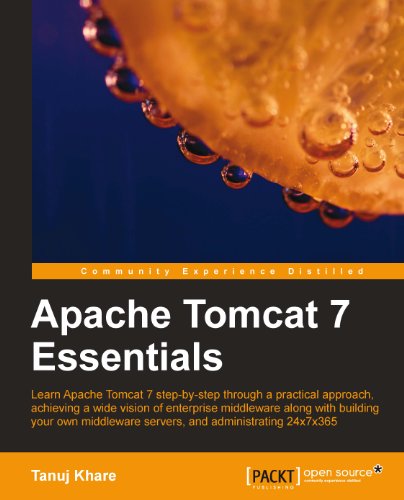
Respectively a $ dollar sign indicates you are a normal user. Note that when you see a command-line with a # hash sign at the beginning this is a unix standard indicating that you are logged in ‘as the root user.’ However, if you are not logged in as root, all of the commands displaying a hash sign, # will require ‘sudo’ permissions. I’m installing Java to /usr/local but if you want you can substitute for another location such as /opt or /usr/share.
#APACHE TOMCAT 8 BOOK INSTALL#
In order to install the binaries we’re going to SSH into the server as root and use GNU Wget to download the dependencies. Installing / Updating to the Latest Java 8 Version

Furthermore, we’re obviously going to need Java and Tomcat so let’s get started by installing or updating to the latest versions. (Currently Java 8 1.8.0_45, Tomcat v8.0.21). For more info you can get a pretty good bootstrap lesson on each technology from the StackOverflow wikis… respectively, SSH, Linux and Vim. If you’re not comfortable using Vim you might delegate this task to someone more confident with their skills or using another editor such as Nano or Emacs. If not I’ll show the commands as I go along but those skills are beyond the scope of this guide. To get this build working I’m assuming you are at least casually familiar with basic Linux commands, shell access and a understanding of the Vim editor. Personal Tools of ChoiceĪs I favor using GNU tools and I’m running Windows locally, I’m using a Cygwin-derived toolkit based on Arch Linux called MSYS2, and ConEmu – a superb console emulator for Windows. Note, this is simply a how-to… not a best-practices guide so if you require a security hardened solution I recommend checking out TomcatExpert for an authoritative how-to. As this build requirement is not entirely obvious I thought I’d share the experience as a simple how-to guide. I hope this article has been to some aid to you.I was recently asked by an associate of mine to deploy a Spring application to a CentOS server running cPanel/WHM and Apache. To view available options on Tomcat run: catalina -h In order to stop Tomcat manually: catalina stop
#APACHE TOMCAT 8 BOOK MAC#
In order to stop Tomcat to start automatically at Mac Login: brew services stop tomcat Start Tomcat automatically at Mac Login:.
#APACHE TOMCAT 8 BOOK MAC OS#
Run the following commands on the terminal in order to install Apache Tomcat: brew update brew install tomcat Step 2: Run Apache TomcatĪpache Tomcat can be run on Mac OS in two separate ways. Openjdk version “12.0.2” 2019–07–16 OpenJDK Runtime Environment (build 12.0.2+10) OpenJDK 64-Bit Server VM (build 12.0.2+10, mixed mode, sharing) Installing and Running Apache Tomcat on Mac OS using Homebrew Step 1: Install Apache Tomcat You will be promoted a message which will look similar to the following: Now, please check if Java is installed on your system by running the following command: java -version Run the following command to install the latest version of JDK onto your system: brew cask install java In order to install Homebrew Cask, please type in the following commands onto the terminal sequentially brew update brew tap caskroom/cask Step 2: Install JDK with Homebrew Cask JDK can be installed onto your Mac using Homebrew Cask. Homebrew Cask extends Homebrew and allows you to install large binary files via the Mac terminal. For instructions to install Homebrew please read the official documentation here. Please make sure Homebrew package manager is installed on your system. (If JDK is installed on your system, then please skip to the next section.) Openjdk version “12.0.2” 2019–07–16 OpenJDK Runtime Environment (build 12.0.2+10) OpenJDK 64-Bit Server VM (build 12.0.2+10, mixed mode, sharing) Installing JDK on Mac OS using Homebrew On the other hand, if JDK is installed, you will be promoted a message which will look similar to the following:


No Java runtime present, requesting install. If the JDK is not installed, then you will be prompted with the following message To check if java installed, open up the terminal and run the following command: java -version In order to install Apache Tomcat on MacOS, we firstly need to install Java Development Kit(JDK). Installing Apache Tomcat on MacOS Mojave using Homebrew


 0 kommentar(er)
0 kommentar(er)
